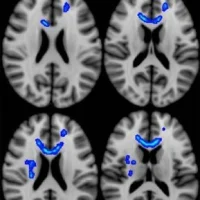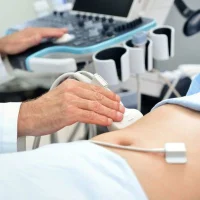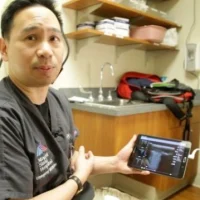The University
of Tennessee College of Medicine in
Memphis, in an area where stroke incidence is 37 percent higher than the
national average, has launched the world’s most comprehensive mobile stroke
unit, capable of conducting and producing advanced quality imaging for stroke
diagnosis and noninvasive CT-angiography.
This is the first time computed tomography (CT) capabilities of this magnitude have been available in a mobile setting, creating the ability to diagnose and launch treatment including tissue plasminogen activator (tPA) treatment and the potent blood pressure drug nicardipine within the critical first hour and select patients for endovascular interventions, neurosurgery and neuro-critical care directly from the prehospital arena.
While other mobile stroke units exist, the combination of many firsts in terms of mobile application and utilisation make UT’s unit, with a Siemens SOMATOM Scope CT scanner, the most complete in the world. The sophistication of this unit means a patient will be prepped to go straight to the catheterisation laboratory, neuro intensive care unit or hospital stroke unit, bypassing the stop in the emergency department entirely.
“The mobile stroke unit is a product of worldwide industry leaders brought together to create the first-of-its-kind vehicle,” said David Stern M.D., the Robert Kaplan Executive Dean and Vice-Chancellor for Clinical Affairs for The University of Tennessee College of Medicine and The University of Tennessee Health Science Center.
“The vehicle framework is from Canada, the Siemens SOMATOM Scope CT scanner was developed by a German company, the custom assembly took place in New York, with the oversight and direction coming from UT College of Medicine in Memphis, Tenn. led by Dr. Andrei V. Alexandrov, the Chairman of the Department of Neurology at the University of Tennessee Health Science Centre and Semmes-Murphey Professor, who is originally from Russia.”

The University of Tennessee College of Medicine in Memphis has
introduced the world’s most comprehensive mobile stroke unit, capable of
conducting and producing advanced quality imaging for stroke diagnosis and
noninvasive CT-angiography
The mobile stroke unit weighs in at more than 14 tons, has its own internal power source and includes features and capabilities never before assembled for mobile deployment. Other mobile units in the U.S. and Europe use smaller portable CT scans that only image the brain (without vessels) and also require the team to move the patient for each slice (picture) that is taken. UT’s unit provides the same number of slices in high resolution as obtained and expected in the hospital setting since it is equipped with a dedicated gantry that automatically moves the patient to obtain images.
Serving a Community with a Major Stroke Health Problem
“We have a tremendous burden of stroke in Shelby County, with a stroke rate per 100,000 population that is 37 percent higher than the national average,” said Dr. Stern, citing data from the Centres for Disease Control Division for Heart Disease and Stroke Prevention.
“The goal is to minimise morbidity and mortality, to have more patients walk out of the hospital fully functional. Time is everything for stroke treatment; the quicker we are able to assess and attend to a patient, the better his or her chances are for recovery,” Stern added.
“If we eliminate the treatment delay getting to and through the emergency room, we can save up to 90 minutes, and as a neurologist, I know that time is brain, so the more time we save, the less likely it is that permanent brain damage will occur in a patient,” said Dr. Alexandrov. “Our ‘time to treatment’ target is less than one hour.”
The UT mobile stroke unit is funded through a public-private collaboration for which more than $3 mln has been raised, which will enable operation for up to three years. The Unit will operate 12 hours a day, one week on and one week off beginning late April 2016.
“The unit will be based in the heart of a 10-mile, most critical needs area of Memphis with the highest incidence of stroke, but can be deployed within the entire metro region. We estimate that 300 patients will need to be treated by the unit to prove its effectiveness over the course of three years,” said Dr. Alexandrov.










